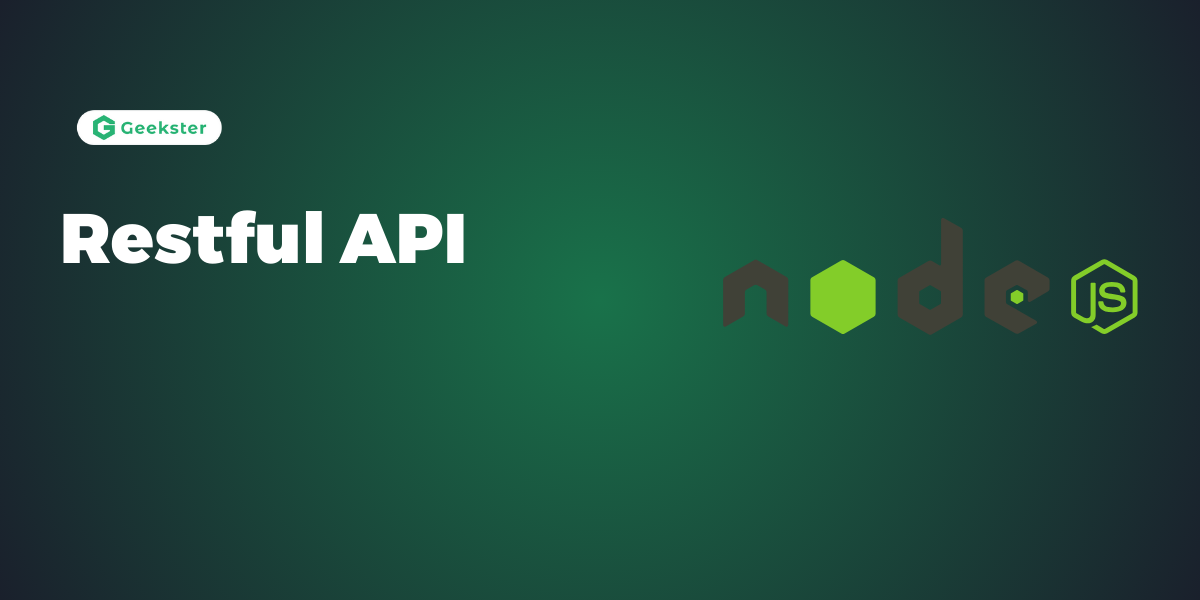RESTful API is a web service that uses HTTP methods to perform CRUD operations on resources, identified by unique URIs, allowing interaction with the system in a scalable manner. It plays a crucial role in enabling seamless communication and integration between different software systems.
RESTful API are a set of architectural principles and constraints for designing networked applications. Built on REST, introduced by Roy Fielding in 2000, RESTful API allow client-server communication. They enable CRUD operations on resources using standard HTTP methods. Examples include GET, POST, PUT, and DELETE.

Key Principles of RESTful APIs:
- Resource-Based: RESTful APIs center around resources, which uniquely identify entities in the system, such as users, products, or orders, using URIs. HTTP methods manipulate these resources.
- Stateless: RESTful APIs are stateless, meaning that each request from a client to the server must contain all the necessary information to process the request. The server does not maintain any client state between requests, improving scalability and reliability.
- Uniform Interface: RESTful APIs define a uniform interface for interacting with resources using standard HTTP methods (GET, POST, PUT, DELETE) and URIs. They also use representation formats (JSON, XML) and hypermedia links (HATEOAS).
- Client-Server Architecture: RESTful APIs follow a client-server architecture, where the client and server are separate entities that communicate over a network. This separation of concerns allows for the independent evolution and scalability of client and server components.
Advantages of RESTful APIs:
- Simplicity: RESTful APIs are simple and intuitive to use, as they leverage familiar HTTP methods and standard communication protocols.
- Scalability: RESTful APIs are inherently scalable due to their stateless nature, allowing for distributed deployment and horizontal scaling of resources.
- Flexibility: RESTful APIs offer flexibility in designing and evolving systems, as they decouple clients from servers and provide a uniform interface for communication.
- Interoperability: RESTful APIs promote interoperability between different systems and platforms by using standard protocols and formats for data exchange.
Practical Applications of RESTful APIs:
- Web Services: RESTful APIs are commonly used to build web services that expose functionality and data to other applications over the internet.
- Mobile Applications: RESTful APIs provide a backend for mobile applications, enabling them to interact with server-side resources and perform CRUD operations.
- Microservices: RESTful APIs facilitate the development of microservices architectures, where independent services communicate with each other through well-defined APIs.
Conclusion:
In conclusion, RESTful APIs are a powerful tool for building scalable, interoperable, and flexible software systems. By adhering to the key principles of REST, developers can design APIs that promote simplicity, scalability, and maintainability. This enables seamless integration and communication between different software components. As we continue to innovate in the digital age, RESTful APIs will remain a cornerstone of modern software development. They empower developers to build robust and interconnected systems. These systems drive digital transformation and innovation.
Frequently Asked Question
A REST API (Representational State Transfer Application Programming Interface) is an architectural style for designing networked applications. It allows clients to interact with server-side resources using standard HTTP methods (GET, POST, PUT, DELETE) and representations (JSON, XML).
Unlike traditional RPC (Remote Procedure Call) APIs, REST API are resource-based and leverage the stateless nature of HTTP. They use standard HTTP methods and URIs to manipulate resources, promoting simplicity, scalability, and interoperability.
RESTful APIs follow several key principles, including resource-based architecture, stateless communication, uniform interface, client-server separation, and hypermedia links (HATEOAS). These principles enable scalable, flexible, and maintainable API design.

